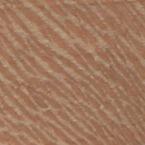American sycamore is going through a resurgence in popularity. Traditionally used in furniture, containers, millwork, flooring, veneer, plywood, pulp wood and particleboard, the species is growing in demand due to its low cost and lacewood-like appearance.
One reason for the resurgence is the push for locally sourced wood products, plus fluctuations in the exchange rate of the dollar. We also see that some users find domestics a more attractive alternative, with drawer sides a growing market segment within wood components.
The veneer generally is sliced into quarters to produce a distinct medullary ray or flake. When cut into quarters it makes a flake that’s similar to lacewood and is sometimes used in place of lacewood and platano. American sycamore color ranges from nearly white to a reddish brown heartwood, and many logs are huge by today’s standards, providing customers a larger yield.
American sycamore (platanacae occidentalis) or plane-tree as it is also known, is closely related to European planetree (platanacae orientalis), and is nearly identical with the exception of color. The American is tan/yellow, while the European is pinkish.
Naming Confusion
American sycamore’s range is the eastern United States, from the Canadian border to the Gulf of Mexico, and from the Atlantic Coast west to the Great Plains.
In the United States, sycamore is a name reserved for several species of Platanus, among them Platanus occidentalis, Platanus racemosa and Platanus wrightii. But in Europe, the commonly used term sycamore refers to a species belonging to the maple family, Acer pseudoplatanus. European members of the Platanus species, such as Platanus hybrida are instead called plane or planetree.
In Europe, nobody refers to planetree as sycamore, due to the fact that their sycamore is what Americans refer to as maple (acer). Also, European planetree is commonly referred to as European lacewood in the USA and Europe as well.
The word ‘planetree’ unmistakably identifies this species on both continents. So it is important that customers are aware of the differences. Some experts suggest verifying orders with photographs.






Have something to say? Share your thoughts with us in the comments below.